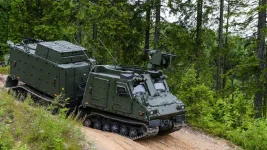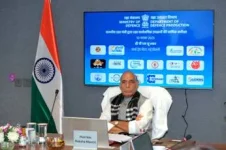The Defence Research and Development Organisation (DRDO) is set to begin Limited Series Production (LSP) of the indigenous Astra Mk2 air-to-air missile in 2026.
This development signals a major advancement in India’s self-reliance capabilities, offering a potent new weapon system with a strike range estimated between 160 and 200 kilometres.
The upcoming commencement of production marks a critical transition for the program, with full-scale manufacturing projected to be underway by the 2027-28 timeframe.
Defence analysts suggest that the Astra Mk2 will not only bolster the Indian Air Force’s (IAF) combat superiority but also present a viable alternative for international air forces seeking to upgrade their arsenals.
Technological Leap Beyond Visual Range
While the Astra Mk1 is already in service with a range of approximately 110 km, the Mk2 variant represents a significant generational leap in technology.The new missile incorporates a dual-pulse solid rocket motor, a distinct upgrade over the single-pulse engine of its predecessor. This propulsion technology allows the missile to sustain energy for longer durations, ensuring high manoeuvrability during the terminal phase of engagement—crucial for intercepting agile fighter jets at long ranges.
Furthermore, the Astra Mk2 is equipped with an advanced indigenous AESA (Active Electronically Scanned Array) seeker, improving its resistance to electronic jamming.
These features are designed to compete directly with premier Western systems, such as the American AIM-120D AMRAAM and the European Meteor missile, dominating the beyond-visual-range (BVR) domain.
The Russian Supply Chain Crisis
The timing of the Astra Mk2’s maturation coincides with a deepening logistical crisis for nations reliant on Russian military hardware. Countries operating the Su-30 Flanker series—including Malaysia, Vietnam, and Algeria—are reportedly monitoring the Indian program with keen interest.Historically, these nations have depended on Russian armaments like the R-77 and the newer R-37M for their air dominance needs.
However, the ongoing conflict in Ukraine and subsequent Western sanctions have severely impacted Russia’s defence industrial base. Reports indicate that Moscow has prioritized domestic supply, leading to export delays and uncertainty regarding the delivery of next-generation missiles.
Strategic Opportunity for India
For operators of the Su-30, the current reliance on legacy Russian R-77 missiles is becoming a tactical liability. With a maximum effective range often below 80 km, these older systems are increasingly outmatched in modern aerial warfare where "first shot, first kill" capability is paramount.The Astra Mk2 offers a strategic solution to this gap. Unlike Western missiles, which often require complex and expensive integration processes for Russian-made aircraft, the Astra system is being natively integrated onto the Su-30MKI platform by India. This compatibility makes it a "plug-and-play" option for other Su-30 operators.
Coupled with emerging interest in other Indian avionics upgrades—such as indigenous radars replacing Russian units—the Astra Mk2 positions India as a critical partner for nations aiming to secure their supply chains against geopolitical volatility.



